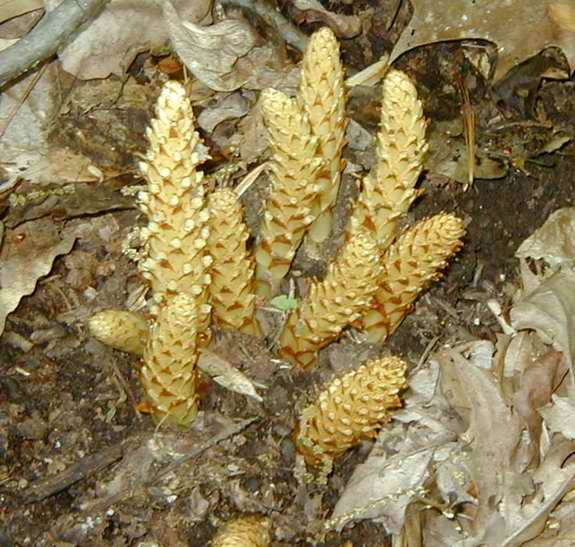|
Common
Name: Squawroot, Cancerroot, American Broomrape Scientific
Name: Conopholis
americana Family:
Orobanchaceae, Broomrape A small spiked plant approximately 3 to 7 inches in height that resembles an elongated pinecone. Clusters emerge on the ground under deciduous trees, primarily oaks. Potpourri: Like all members of the Broomrape family, the Squawroot contains no chlorophyll. It must therefore obtain nutrients from a host plant as a parasite. The Squawroot attaches to the root structure of oak trees for this purpose. However, this parasitic activity generally does not result in the death of the host tree, as the extraction is relatively minor and the number of individual Squawroot shoots is not extensive. Like the other two significant species of the Broomrape family (Beech Drops - Epiphegus virginiana that feed on Beech trees and One-flowered Cancerroot - Orobanche uniflora that feeds on other plants), Squawroot has astringent medicinal properties. A decoction can be used to treat hemorrhages of the bowels and uterus and as a cure for headaches. The name Squawroot is attributed to its use by Native American females as a treatment to relieve the symptoms of menopause. The name Cancerroot is a generic reference to its general palliative properties, as it has no measurable anti-tumor properties. The genome of the Squawroot has been sequenced. The genes responsible for photosynthesis proteins are missing, while the remainder of the genome is consistent with other vascular, seed-bearing flowering plants, indicating an evolutionary mutation. |
